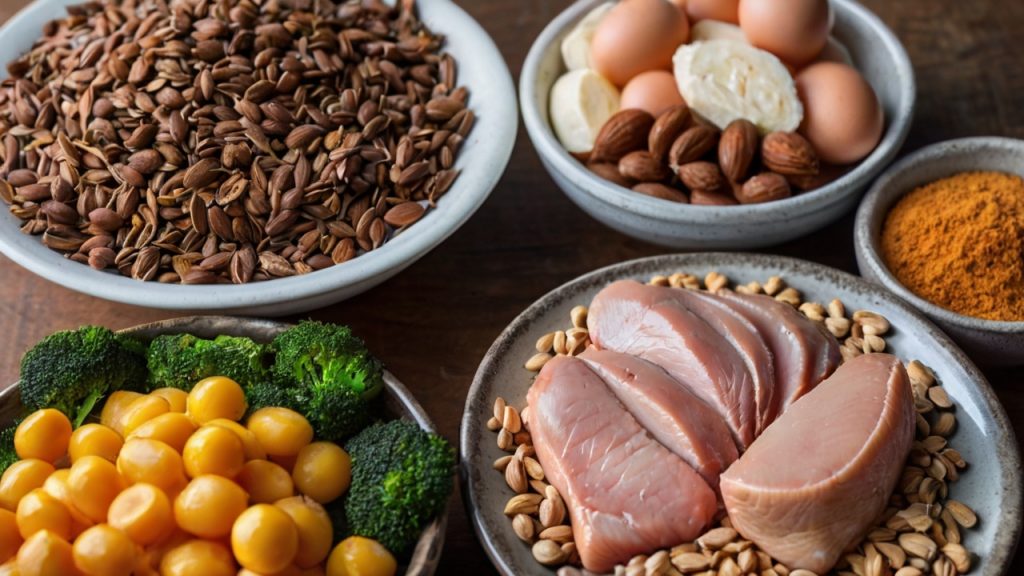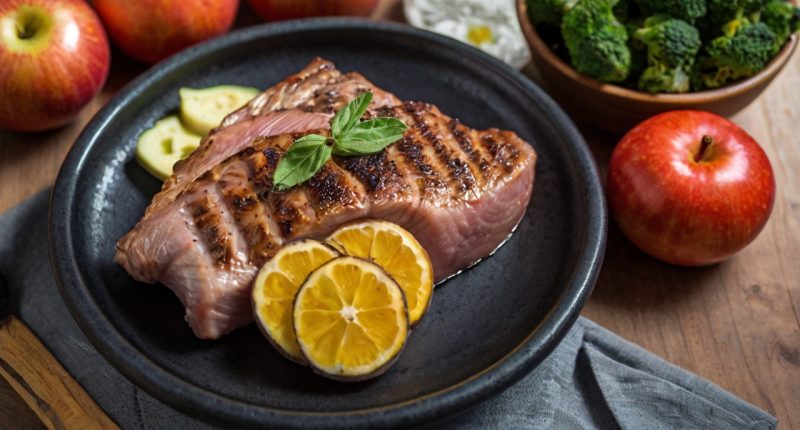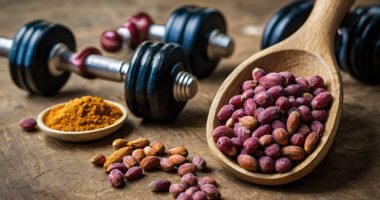High protein diets have become increasingly popular among fitness enthusiasts and individuals aiming to lose weight while preserving muscle mass. However, with so much information available, finding the right balance between fat loss and muscle preservation can be challenging. This blog post will delve into the basics of high protein diets, emphasizing the essential role of protein in weight management and muscle maintenance. We’ll explore how to incorporate protein into your meals to maintain optimal energy levels and offer practical strategies for adopting a high protein lifestyle.
Table of Contents
Why are High Protein Diets So Popular?
High protein diets have gained significant popularity in recent years, particularly among those looking to manage their weight, enhance their athletic performance, or improve their overall health. At its core, high protein diets emphasizes consumption of foods that are rich in protein while reducing the intake of carbohydrates and fats.
Generally, high protein diets comprises at least 20-30% of daily caloric intake coming from protein sources.
- Lean meats (chicken, turkey, beef)
- Fish (salmon, tuna, mackerel)
- Dairy products (Greek yogurt, cottage cheese)
- Legumes (lentils, chickpeas, beans)
- Nuts and seeds (almonds, chia seeds)
Protein is fundamental for various bodily functions, including muscle building, hormone production, and immune functioning. It’s crucial to recognize the three main types of proteins:
| Type | Sources | Benefits |
|---|---|---|
| Animal Protein | Meat, fish, dairy | Complete amino acids, supports muscle growth |
| Plant Protein | Legumes, nuts, seeds | Rich in fiber, supports heart health |
| Protein Supplements | Whey, soy, pea protein powders | Convenient source, excellent for recovery |
Implementing high protein diets can be beneficial not only for those aiming for fat loss but also for those interested in muscle preservation during weight loss efforts. When the body is in a caloric deficit, consuming adequate amounts of protein is essential for protecting muscle tissue.
But it’s important to focus on the quality of protein sources and not solely on the quantity. Opt for whole foods whenever possible, as they provide essential vitamins and minerals alongside protein. Additionally, keeping hydration levels up and balancing protein with other macronutrients like healthy fats and complex carbohydrates is vital for overall health and well-being.

Incorporating a variety of protein-rich foods in your diet can help to keep meals enjoyable and sustainable in the long run, ensuring you stay on track with your health goals.
The Role of Protein in Fat Loss
The impact of protein on fat loss is a significant area of interest for many individuals looking to shed extra pounds while preserving lean muscle mass. Below we explore how protein plays a critical role in this process.
1. Protein as a Satiety Booster
One of the primary benefits of a high-protein diet is its ability to increase feelings of fullness and reduce overall calorie intake. This phenomenon is often linked to:
- Higher thermic effect: Digestion of proteins requires more energy.
- Slower gastric emptying: Protein takes longer to break down, keeping you feeling satiated longer.
2. Muscle Preservation During Weight Loss
When you engage in a caloric deficit, there’s a risk of losing both fat and muscle mass. Protein intake is crucial in preserving muscle stores during weight loss.
Maintaining muscle while losing fat not only enhances appearance but also maintains metabolic rate. – Fitness Expert
3. Enhanced Metabolism
A high-protein intake can lead to a boost in your metabolic rate. Protein not only increases the thermic effect of food but also contributes to maintaining lean muscle mass, which burns more calories at rest.
4. Balancing Macronutrients for Fat Loss
To achieve effective fat loss, it’s essential to maintain a balanced diet. Here’s a simple table summarizing the recommended macronutrient distribution:
| Macronutrient | Recommended Percentage |
|---|---|
| Protein | 25-30% |
| Carbohydrates | 40-50% |
| Fats | 20-30% |
5. Protein Sources for Fat Loss
Incorporating a variety of high-quality protein sources can further enhance your fat loss efforts. Some optimal choices include:
- Lean meats: Chicken, turkey, and fish.
- Plant-based proteins: Lentils, chickpeas, and quinoa.
- Dairy products: Greek yogurt and cottage cheese.
In summary, the role of protein in fat loss is multifaceted, influencing everything from satiety to muscle preservation. By understanding and leveraging the benefits of protein, individuals can enhance their weight loss journey effectively.
Effect on Muscle Preservation
When it comes to high protein diets, one of the most significant benefits is their role in muscle preservation. High protein intake can play a pivotal part in not just maintaining muscle mass but also in promoting muscle recovery and growth. In this section, we will explore how protein influences muscle preservation and why it is especially important during weight loss.
Protein’s Role in Muscle Preservation
Muscle loss, or muscle wasting, occurs when the body breaks down muscle tissue for energy. This is often a concern during weight loss, especially if the calorie deficit is too severe. To combat this, an adequate intake of protein can help:
- Stimulate Muscle Protein Synthesis (MPS): After a workout or unfavorable energy balance, consuming protein encourages muscle repair and growth through MPS.
- Reduce Muscle Breakdown: Higher protein consumption can lower the rate of muscle protein breakdown, contributing to a net positive protein balance.
- Enhance Recovery: Proper protein intake helps in faster recovery from workouts, as it provides the necessary amino acids for repair.
Recommended Protein Intake
The amount of protein you need can vary based on several factors such as your age, activity level, and fitness goals. However, a general guideline is:
| Activity Level | Protein Needs (grams per kg of body weight) |
|---|---|
| Sedentary | 0.8 |
| Active | 1.2 – 1.6 |
| Strength Training | 1.6 – 2.2 |
| Weight Loss | 1.6 – 2.2 |
Protein Sources for Muscle Preservation
Incorporating a variety of protein sources into your diet can help in muscle preservation. Here are some excellent sources:
- Lean Meats: Chicken, turkey, and lean cuts of beef.
- Fish: Salmon, tuna, and mackerel.
- Dairy: Greek yogurt, cottage cheese, and milk.
- Plant-based Proteins: Lentils, chickpeas, quinoa, and tofu.
Balancing protein intake for energy
When following high protein diets, one of the key challenges is balancing protein intake to ensure optimal energy levels. This balance is essential not only for sustaining daily activities but also for supporting muscle preservation and fat loss.
Understanding Protein and Energy Needs
Protein plays a vital role in building and repairing tissues, and it is also important for various bodily functions including hormone regulation. However, for those on a high protein diet, it’s crucial to determine how much protein is necessary to maintain energy levels without impeding other macronutrient needs.
Daily Protein Intake Recommendations
| Activity Level | Protein Intake (grams per kg of body weight) |
|---|---|
| Sedentary | 0.8 |
| Lightly Active | 1.0 – 1.2 |
| Moderately Active | 1.2 – 1.6 |
| Very Active | 1.6 – 2.2 |
Strategies for Balancing Protein and Energy Sources
- Incorporate a variety of protein sources: Utilize both animal and plant-based proteins to ensure a comprehensive amino acid profile.
- Consume protein evenly throughout the day: For sustained energy, distribute protein intake across meals.
- Pair protein with carbohydrates: Combining protein with carbohydrates can enhance energy levels, especially around workout times.
- Monitor overall caloric intake: Ensure that your total caloric intake supports your activity level and energy needs.
Listening to Your Body
It’s important to pay attention to how your body responds to different levels of protein intake. If energy levels drop, you may need to reassess your macronutrient distribution. Some signs that you may need to adjust your protein intake include:
Fatigue,
Decreased performance,
Increased cravings
Balancing protein intake for energy requires a holistic approach. By considering your individual energy needs, activity levels, and overall dietary goals, you can effectively navigate the complexities of a high protein diet while promoting fat loss and muscle preservation.

Strategies for successful high protein diets
Implementing high protein diets can be an effective way to achieve both fat loss and muscle preservation. However, to maximize the benefits of such a diet, you need to adopt certain strategies that facilitate a smooth transition and sustain long-term results. Below are some essential strategies for success:
1. Set Clear Goals
Before diving into a high protein regimen, it’s important to have clear and measurable goals. Whether you aim for weight loss, muscle gain, or overall health improvement, defining your objectives will guide your dietary choices.
2. Choose Quality Protein Sources
Not all protein sources are created equal. Focus on incorporating high-quality protein such as:
- Lean meats (chicken, turkey, lean cuts of beef)
- Fish and seafood (salmon, tuna, shrimp)
- Dairy products (Greek yogurt, cottage cheese)
- Plant-based proteins (lentils, chickpeas, quinoa, tofu, tempeh)
3. Monitor Your Macronutrient Ratios
To stabilize energy levels while adhering to high protein diets, it’s crucial to find the right macronutrient ratios. A common ratio for high protein diets could be:
| Macronutrient | Percentage of Daily Calories |
|---|---|
| Protein | 30-40% |
| Carbohydrates | 30-50% |
| Fats | 20-30% |
4. Include Snacks Wisely
Including protein-rich snacks can help you meet your daily protein goals without feeling overly full. Consider options like:
- Protein bars
- Nuts and seeds
- Hard-boiled eggs
- Beef jerky
5. Stay Hydrated
Protein metabolism requires hydration, so ensure you drink enough water throughout the day. Aim for at least 8-10 glasses of water daily, adjusting for activity level and climate considerations.
6. Track Your Progress
Keep a food journal or use a nutrition app to track your protein intake, along with other macronutrients and body measurements. This will help you stay accountable and make necessary adjustments.
7. Be Flexible
While it’s important to stick to your high protein goals, life can be unpredictable. Allow yourself some flexibility to enjoy meals out or special occasions without guilt, since balance is key to sustaining a healthy lifestyle.
By implementing these strategies, you can navigate the challenges of high protein diets while effectively promoting fat loss and muscle preservation in your fitness journey.
Frequently Asked Questions
What is high protein diets?
High protein diets is one that includes a higher proportion of protein than the average diet, often recommended for those looking to build muscle, lose weight, or maintain muscle mass while losing fat.
How does protein help in muscle preservation during fat loss?
Protein helps preserve muscle during fat loss by providing the necessary amino acids for muscle repair and growth, thus minimizing muscle breakdown when in a calorie deficit.
What are some common sources of protein for high protein diets?
Common sources of protein include lean meats (like chicken and turkey), fish, eggs, dairy products, legumes, nuts, and protein supplements such as whey or plant-based powders.
Is it possible to lose fat without sacrificing muscle on high protein diets?
Yes, high protein diets can facilitate fat loss while preserving muscle, especially when combined with strength training and a balanced intake of carbs and fats.
What ratio of macronutrients is recommended for those on high protein diets?
While ratios can vary, a common recommendation for those aiming for fat loss while preserving muscle is 40% protein, 40% carbohydrates, and 20% fats, though individual needs may vary.
Can a high protein diet have any negative effects?
Potential negative effects of a high protein diet may include kidney strain in individuals with pre-existing conditions, digestive issues, and nutrient imbalances if fruits, vegetables, and grains are not adequately included.
How can someone maintain a balanced diet while following a high protein plan?
To maintain a balanced diet, one should include a variety of nutrient-dense foods, ensure sufficient fiber intake from fruits and vegetables, and consider overall caloric needs and macronutrient distribution.






1 comment